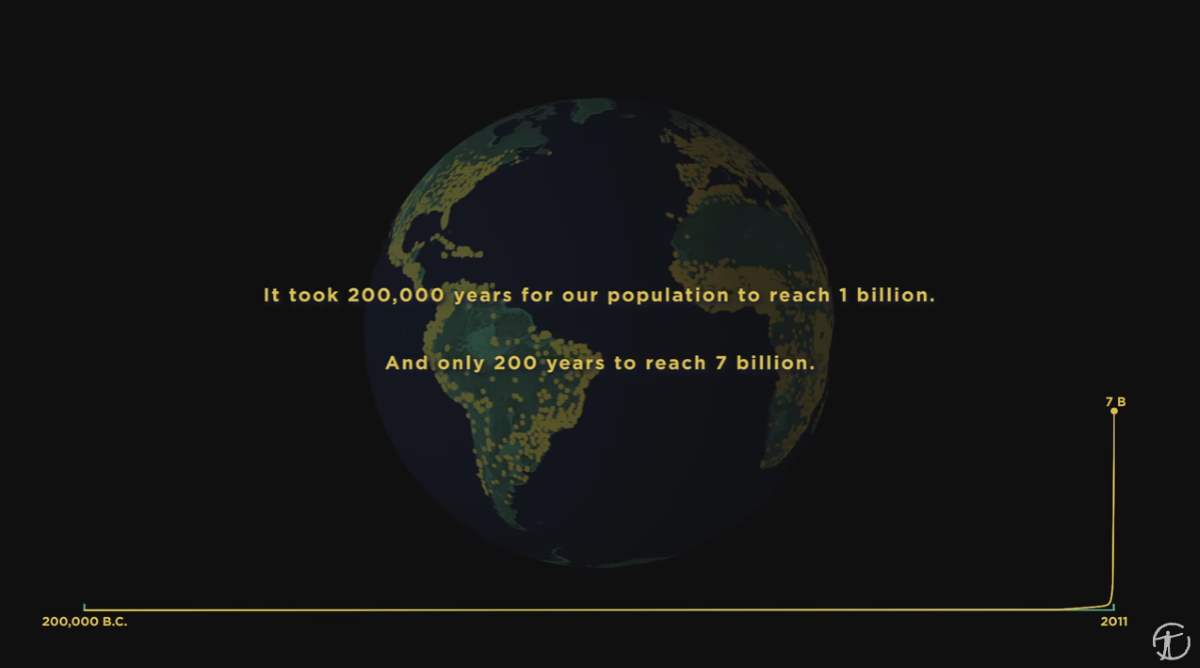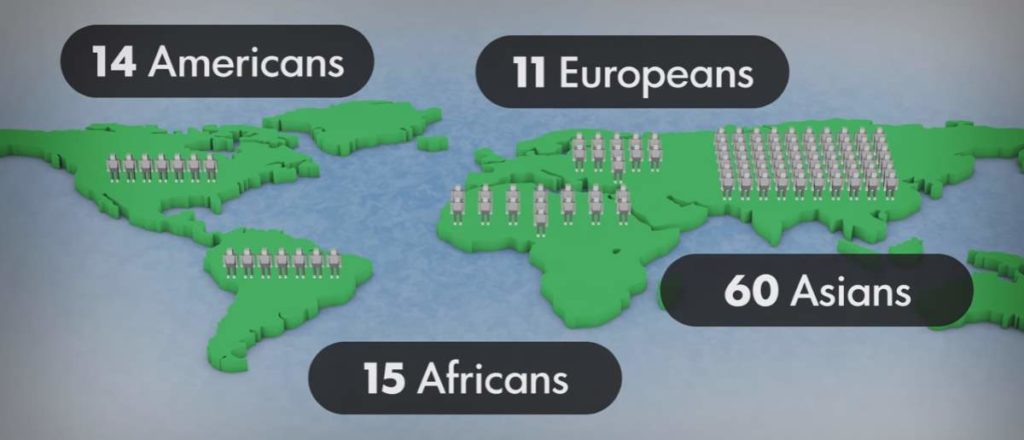The Earth is getting more crowded every single day. As of 2023, the world population was estimated at 8 billion. Our planet is already overpopulated, and despite the growth of the population slowing down, the situation will be worse: the United Nations estimates it will further increase to 11.2 billion in the year 2100.
Here is a video published by the American Museum of Natural History showing the World’s population through time.
“It took 200,000 years for our human population to reach 1 billion. And only 200 years to reach 7 billion. But growth has begun slowing, as women have fewer babies on average. When will our global population peak? And how can we minimize our impact on Earth’s resources, even as we approach 11 billion?”
The milestones and big events and the population
- Modern humans (H.sapiens) evolved in Africa about 200,000 years ago.
- About 100,000 years ago, we began migrating across the globe. During this period, the human population remained low – probably less than 1 million people.
- Irrigation began at about the same time in Egypt and Mesopotamia (present-day Iraq and Iran) using the water of the flooding Nile or Tigris/Euphrates rivers. With the advent of farming, growth picked up.
- By AD 1, the world population reached approximately 170 million people. The Roman Empire in Europe/Mediterranean/Middle East and the Han Dynasty in China were around their peak.
- 4th century – the golden age of India begins. The human population is around 180 million.
- 6th century – Mayan civilization was at its peak. 177 million.
- 7th century – the birth of Islam. 177 million.
- 8th century – smallpox in Japan (735-737). 195 million.
- 9th century – gunpowder invented in China. 219 million.
- 11th century – the compass was used in Song Dynasty China by the military for navigational orienteering. 289 million.
- 13th century – the rise of the Mongol Empire. 364 million.
- 14th century – the Black Death (Bubonic Plague). After five years 25 million people were dead in Europe – one-third of Europe’s people. The number of humans is around 343 million – a rare decline in history.
- End of the 15th century – the Europeans arrived in the Americas. 417 million.
- 18th century – Industrial Revolution begins. 804 million.
- 1 billion – it is estimated that the population of the world reached one billion for the first time in 1804. It was another 123 years before it reached two billion in 1927, but it took only 33 years to reach three billion in 1960.
- World War I (1914-1917). Around 1.7 billion people live on Earth.
- World War II (1938-1945). Around 2.3 billion people live on Earth
- 2016: 7.4 billion.
- Today (as of 2023): More than 8 billion people living on Earth.
- 2100 estimate: 11.2 billion.
In short, it took 200,000 years for the human population to reach 1 billion. And only 200 years to reach 7 billion.
Birth Rate Versus Death Rate
Despite global births having seen a decline over the past several decades, thanks to advances in farming, medicine, and sanitation, a newborn today can expect to live more than 70 years. In fact, in the developed parts of the world, even more than 80 years. That’s why the birth rate is still higher than the death rate.

After watching the video, the timeline of the human population reminded me of the infographic titled “Earth Temperature Timeline” which went viral over the Internet a few months ago (you can see it below). The timeline of the growth of the human population is very similar to the timeline of Earth’s average temperature.
Correlation does not imply causation, yes, but we have plenty of other evidence showing that humans are the major cause of global warming.

- Moon Landings: All-Time List [1966-2025] - February 2, 2025
- What Is Max-Q and Why Is It Important During Rocket Launches? - January 16, 2025
- Top 10 Tallest Rockets Ever Launched [2025 Update] - January 16, 2025


